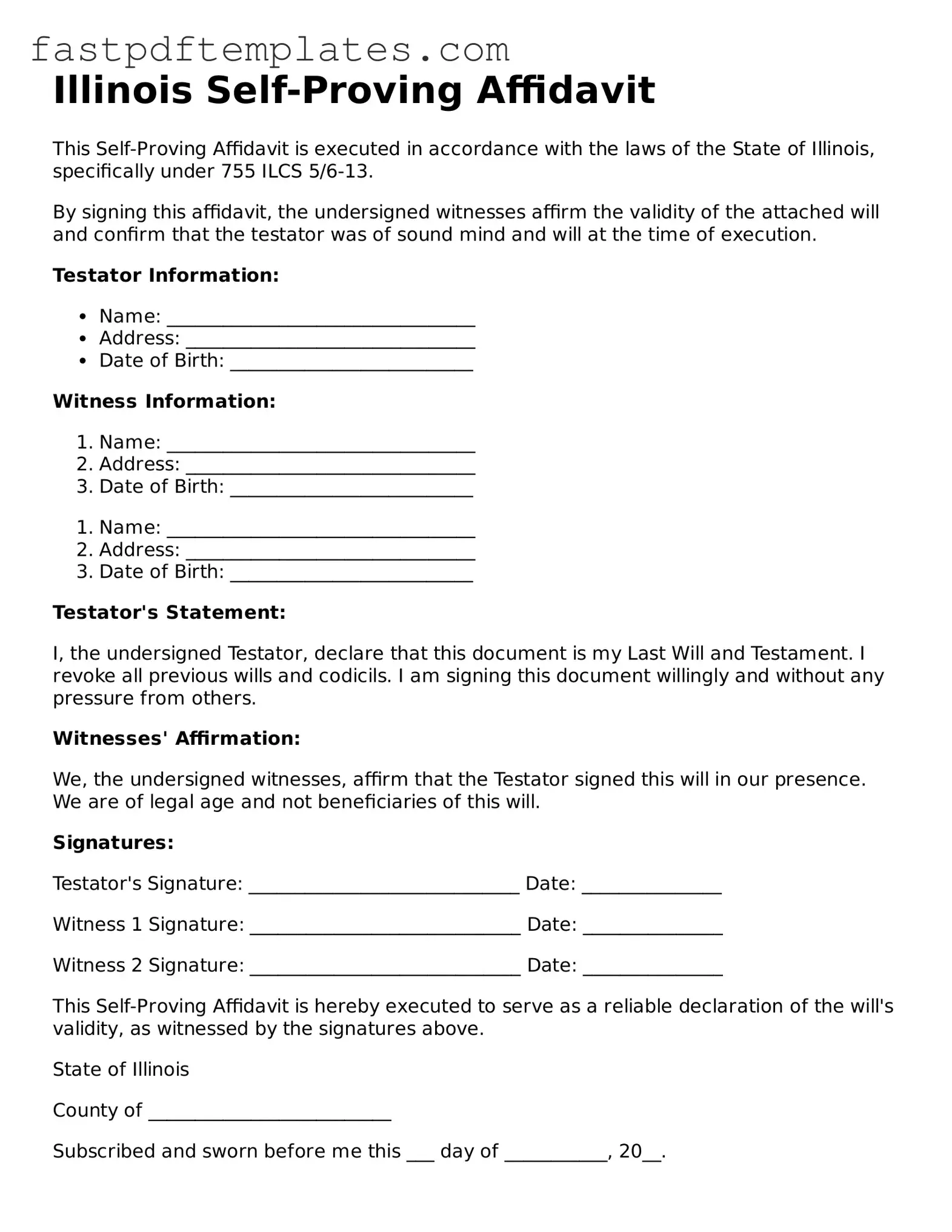Illinois Self-Proving Affidavit
This Self-Proving Affidavit is executed in accordance with the laws of the State of Illinois, specifically under 755 ILCS 5/6-13.
By signing this affidavit, the undersigned witnesses affirm the validity of the attached will and confirm that the testator was of sound mind and will at the time of execution.
Testator Information:
- Name: _________________________________
- Address: _______________________________
- Date of Birth: __________________________
Witness Information:
- Name: _________________________________
- Address: _______________________________
- Date of Birth: __________________________
- Name: _________________________________
- Address: _______________________________
- Date of Birth: __________________________
Testator's Statement:
I, the undersigned Testator, declare that this document is my Last Will and Testament. I revoke all previous wills and codicils. I am signing this document willingly and without any pressure from others.
Witnesses' Affirmation:
We, the undersigned witnesses, affirm that the Testator signed this will in our presence. We are of legal age and not beneficiaries of this will.
Signatures:
Testator's Signature: _____________________________ Date: _______________
Witness 1 Signature: _____________________________ Date: _______________
Witness 2 Signature: _____________________________ Date: _______________
This Self-Proving Affidavit is hereby executed to serve as a reliable declaration of the will's validity, as witnessed by the signatures above.
State of Illinois
County of __________________________
Subscribed and sworn before me this ___ day of ___________, 20__.
_____________________________________
Notary Public
My commission expires: ____________
